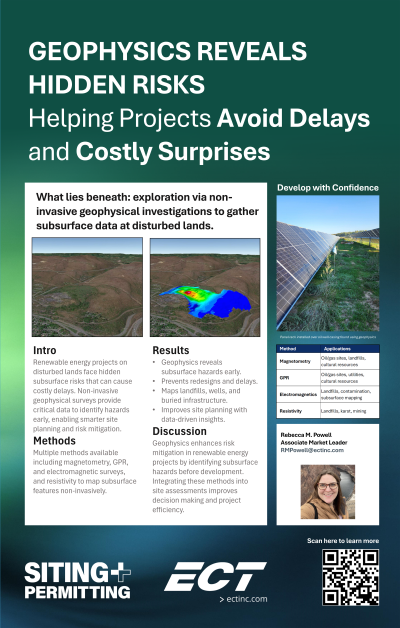What lies beneath: exploration via non-invasive geophysical investigations to gather subsurface data at disturbed lands.


Rebecca Powell, Environmental Professional (she/her/hers)
Market Leader for Renewable Energy
ECT
Midland, Michigan
Poster Presenter(s)
Renewable energy projects often face challenges due to varying subsurface conditions at previously developed sites. Land access agreements, contamination concerns, and restrictive contracts can hinder subsurface exploration until late stages of development. To address these issues, geophysical survey techniques offer a non-invasive solution for gathering significant subsurface data to help developers overcome potential fatal flaws.
This presentation will discuss various geophysical methods, including aerial and ground-based techniques, that can be used to investigate disturbed lands such as abandoned landfills, mines, petroleum fields, and unmarked burial grounds. By understanding and overcoming these environmental constraints early in the development process, developers can save time and resources by avoiding costly redesigns. Additionally, the extent of underground mining, karst topography, and historical landfilling can be accurately determined, preventing potential construction delays. Specific case studies will highlight the effectiveness of geophysical surveys in identifying the precise locations of plugged or abandoned wells, flowlines, and other buried infrastructure in petroleum fields.
